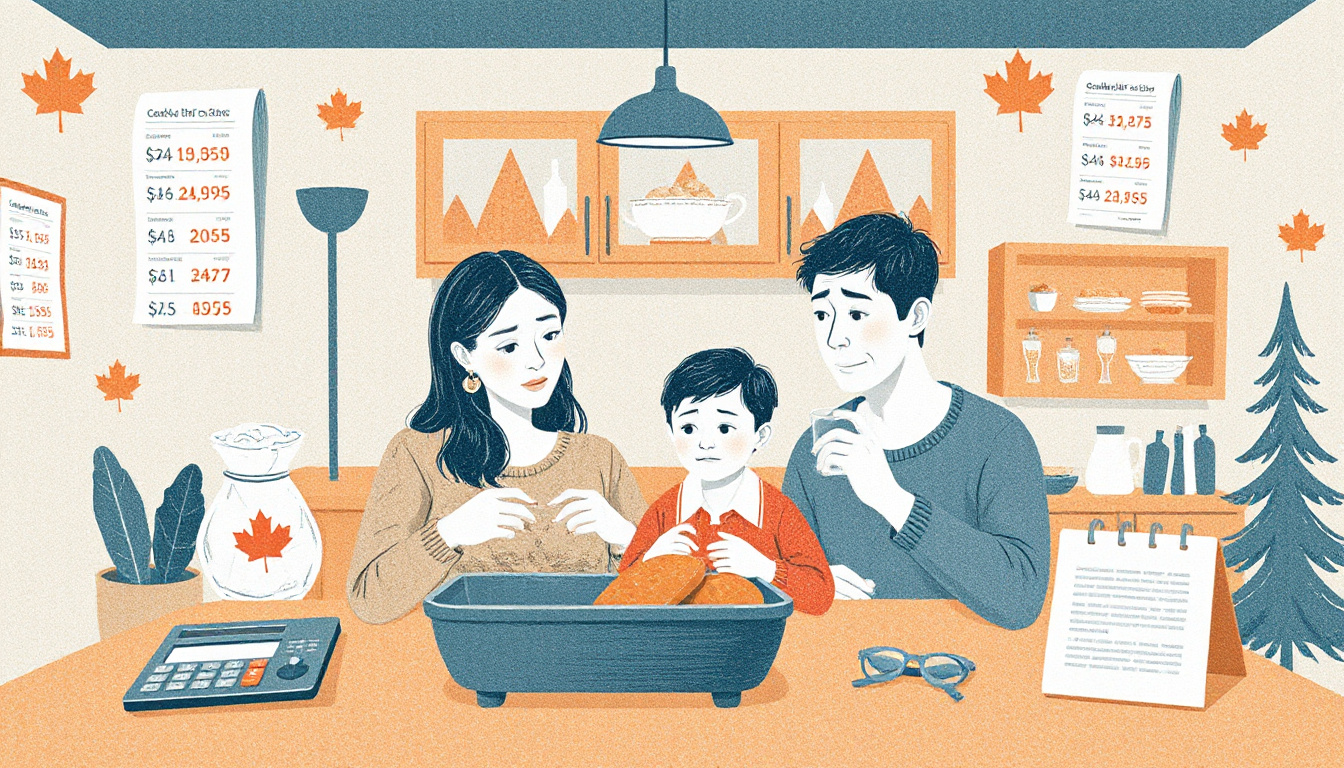As a Canadian consumer or business owner, understanding the nuances of U.S. tariffs is essential to navigating our interconnected economies. Tariffs can influence the pricing of goods, services, and ultimately household budgets across Canada. In this article, we’ll explore what U.S. tariffs are, their intended purpose, and how they can impact Canadian imports and consumer spending. You’ll also discover the potential long-term consequences they may have on the Canadian economy. By gaining insight into these factors, you’ll be better prepared to manage your household budget in a fluctuating market.

Key Takeaways
- U.S. tariffs are designed to protect domestic industries but can increase the cost of imported goods.
- Higher prices on Canadian imports due to U.S. tariffs can strain household budgets.
- Canadian consumers may face reduced product choices as U.S. tariffs lead to market changes.
- Long-term, persistent tariffs could lead to increased inflation rates in Canada.
- The overall Canadian economy could experience slower growth due to the ripple effects of U.S. tariffs.
Understanding U.S. Tariffs and Their Purpose
U.S. tariffs are taxes imposed on imported goods, and understanding their purpose is essential for Canadian households. These tariffs aim to protect local industries by making foreign products more expensive, encouraging consumers to buy domestic alternatives. However, when the U.S. applies tariffs on goods that Canada exports, the ripple effect can reach deep into Canadian household budgets. For instance, if tariffs are enforced on Canadian lumber, construction costs may rise, impacting housing prices directly. Similarly, tariffs on essential products like steel or aluminum can lead to higher prices for automobiles and consumer goods. This means that while tariffs might protect certain jobs in the U.S., they could inadvertently strain your budget back home by increasing costs on everyday products.
Impact of Tariffs on Canadian Imports and Prices
### Impact of Tariffs on Canadian Imports and Prices
Tariffs imposed by the U.S. can significantly impact Canadian imports and household budgets. When the U.S. government raises tariffs on goods, Canadian manufacturers and retailers face higher costs for importing these products. As a consequence, they may pass these increased costs onto consumers, leading to higher prices on everyday items. This situation is particularly pronounced in sectors such as electronics, automotive parts, and agricultural products, where reliance on U.S. imports is high. When tariffs increase, Canadian households may need to allocate more of their budgets to cover these heightened expenses, potentially straining their financial resources. For example, if the price of imported electronics rises due to tariffs, you might find yourself paying more for gadgets that were previously affordable. Thus, it’s crucial for Canadians to stay informed about U.S. tariff changes and consider how these developments could impact their purchasing power and overall cost of living.
‘In the long run, we are all dead.’ – John Maynard Keynes

Effects on Canadian Consumers and Household Budgets
### Effects on Canadian Consumers and Household Budgets
U.S. tariffs play a significant role in shaping the economic landscape for Canadian consumers. When tariffs are imposed on goods imported from Canada or when the U.S. raises tariffs on other countries, the impact can ripple across the border. First, Canadian households may experience higher prices for imported goods, particularly essentials like electronics, automotive parts, and various consumer products. This occurs as manufacturers often pass on the increased costs of tariffs to consumers, making everyday items more expensive.
Furthermore, Canadian businesses reliant on U.S. exports may face reduced demand, leading to job losses and decreased wages. As disposable income tightens, families may need to adjust their budgets, cutting back on luxuries and even necessary expenses. It’s crucial for consumers to be aware of these economic changes, as understanding the implications of U.S. tariffs can help in making informed purchasing decisions, thereby managing household budgets more effectively.
Potential Long-term Consequences for the Canadian Economy
The impact of U.S. tariffs on the Canadian economy has far-reaching implications, particularly for household budgets. When the United States imposes tariffs on imported Canadian goods, the immediate effect is a potential increase in the prices of these goods. Canadian consumers may notice rising costs in everyday items, from food to electronics. This price hike can squeeze household budgets, forcing families to adjust spending habits, often prioritizing essentials over discretionary spending. Over time, this shift can influence overall consumer confidence and dampen economic growth. As businesses face reduced exports, they may cut back on hiring or investments, leading to stagnation or even job losses, which could further constrict household financial stability. Additionally, prolonged tariff impacts can destabilize industries reliant on cross-border trade, ultimately contributing to a less resilient Canadian economy.
Frequently Asked Questions
What are U.S. tariffs and why are they imposed?
U.S. tariffs are taxes levied on imported goods from other countries, intended to protect domestic industries by making foreign products more expensive. These tariffs are often imposed for economic or political reasons.
How do U.S. tariffs affect Canadian imports?
When the U.S. imposes tariffs on goods imported from Canada, it can increase the prices of those goods, making it more expensive for Canadian businesses to export to the U.S. This can lead to a decrease in demand for Canadian exports.
What impact do tariffs have on Canadian consumers?
Tariffs can lead to higher prices for certain imported goods in Canada, as businesses pass on the increased costs to consumers. This could strain household budgets, leading to increased expenses for items like electronics, clothing, and furniture.
What are the potential long-term consequences of U.S. tariffs on the Canadian economy?
In the long term, sustained U.S. tariffs could impact Canada’s economic growth, leading to reduced investment and job losses in affected industries. This can result in broader economic repercussions, including a slowdown in consumer spending and overall economic activity.
How can Canadian households prepare for potential price increases due to tariffs?
Canadian households can prepare by budgeting for potential price increases, seeking alternatives to imported goods, and monitoring changes in market prices for items they commonly purchase. Additionally, staying informed about trade policies can help families plan better.
